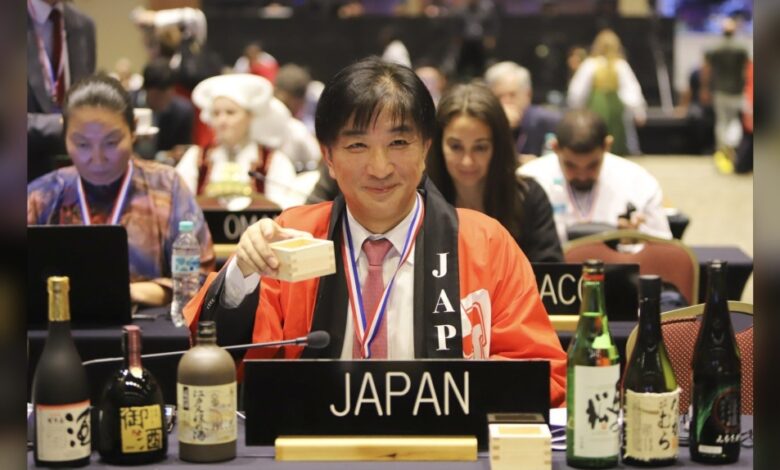Japan’s sake joins UNESCO’s cultural heritage list

LUQUE, Paraguay –
Sake holds a special place in Japanese culture, perhaps even more so than the world-renowned sushi. It is brewed in ancient mountaintop warehouses, enjoyed in izakayas (Japanese pubs), and served at various ceremonies and celebrations. On Wednesday, UNESCO officially recognized sake as an “intangible cultural heritage of humanity.”
During a meeting in Luque, Paraguay, UNESCO’s committee for safeguarding cultural heritage voted to acknowledge 45 cultural practices and products from around the world. This list included items such as Brazilian white cheese, Caribbean cassava bread, and Palestinian olive oil soap. Unlike UNESCO’s World Heritage List, which focuses on physical sites, the Intangible Cultural Heritage designation celebrates cultural practices and products that hold significance for different cultures.
A Japanese delegation expressed their joy at the announcement in Luque. According to Kano Takehiro, the Japanese ambassador to UNESCO, sake is considered a divine gift and plays a vital role in Japanese social and cultural events.
The process of making sake involves few ingredients – rice, water, yeast, and koji (rice mold). The meticulous two-month-long process of steaming, fermenting, and pressing is essential to create this traditional rice wine. The type of rice used is crucial, as it must be Japanese for the product to be classified as Japanese sake.
The UNESCO recognition not only acknowledges the craftsmanship involved in making sake but also honors a tradition that dates back over 1,000 years. Sake has been referenced in historical texts like “The Tale of Genji,” showcasing its significance in Japanese culture.
Despite a shift in preferences towards imported wine, beer, and whiskey among younger Japanese drinkers, officials hope that the UNESCO designation will reignite interest in traditional sake production. Japanese breweries are optimistic that this recognition will boost sake exports, particularly to the United States and China, where the popularity of sake is on the rise.
To celebrate the UNESCO designation, Takehiro raised a cypress box filled with sake, paying homage to this iconic Japanese beverage and cultural tradition.




